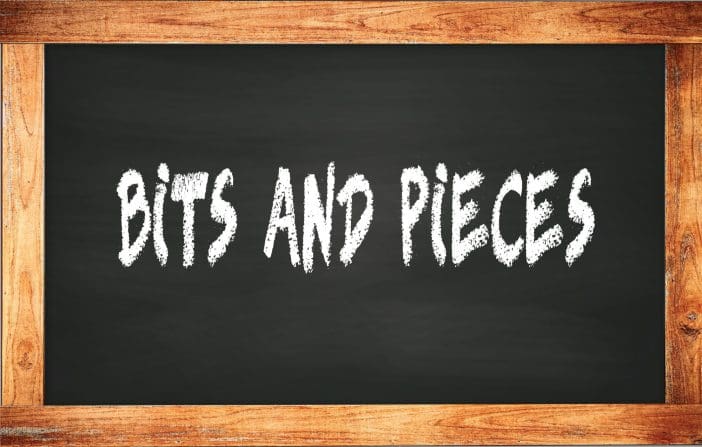
by Paula Johnson
What do softening butter, early toothbrushes and Scotch tape have in common? Nothing, except this week they all appear in my column.
Maybe I’m the only one, but sometimes I need more butter than I have in the frig and need to move to my stash in the freezer. How to use frozen butter in a recipe that I want to do NOW? It’s one thing to easily soften butter that is only refrigerated, but frozen? That’s a different challenge.
Even softening butter that is firm in the frig might require a bit more time than waiting for it to soften on the counter or in a bowl. Microwaving is not the best, either.
Have you noticed that time in the microwave often causes pooling or a sagging center? That isn’t what you want for cookies or such. Try this:
Either boil water to very hot or use tap water too hot to touch (even for hardened hands accustomed to hot water). Fill a tall glass or a Mason jar able to tolerate this very hot water. Let it sit for about 5 minutes.
Get a cutting board or totally flat surface and stand the stick of butter vertically (on its end) on the flat surface. After the hot water has been in the glass for an allotted time to thoroughly heat the jar), empty the glass and place it over the standing butter stick. Let this sit for 5-10 minutes depending upon the hardness of the butter
You can repeat if necessary. If you are trying to soften a larger block, you can cut/break it into chunks and use a ceramic or glass bowl to cover the butter following the same process.
Daily dental care as we know it today didn’t start to develop until after WWII when soldiers, who had a dental hygiene regimen during the war abroad returned and habits changed.
Many of you likely know and use ancient dental habits. Before the advent of toothbrushes, in BC times, Babylonians used an item called a “chew stick.” Most of them were twig like items that were softened in boiling water.
In the Arab world there was a Salvadora persica (a toothbrush tree) for their chew sticks. This shrub was aromatic much like we have mint flavored floss picks.
All this later developed into what we have today – toothpicks. Of course, it wasn’t enough to have the common wooden toothpicks, so some cultures crafted them of brass and silver.
The early Chinese (Tang dynasty of 600-900 CE/AD) first created what would be an early toothbrush with coarse hog hair tied to a handle of bone or bamboo. By the 15th century during the Ming dynasty, Emperor Hongzhi patented the hog’s hair toothbrush.

This design remained mostly unchanged until the middle of the last century when toothbrushes as we know them were developed. In 1938 the DuPont chemical company debuted the nylon bristle toothbrush. Dental care began.
Now we have electric (charged) toothbrushes that time our brushing for the exact 2 minutes recommended by dentists.
Many of us know of the accidental discovery of sticky notes by 3M (Minnesota Mining and Manufacturing). What about Scotch tape?
Around the 1920s a 3M employee, Richard Drew, was a lab tech working to create the perfect tape for auto painters to mask off their work. He was promoted for developing a masking tape from crepe paper, cabinetmaker’s glue, and glycerin.
Another problem came to his attention from bakeries who were using cellophane for packaging but had nothing that would seal it. The masking tapes he created turned brown, and he wanted to invent one that remained clear. Thus, he created a cellophane tape that remained clear by only having it sticky along the edges.

Because only the edges were sticky, some people accused Drew of being “Scotch” as a reference to the thriftiness of the Scots. Because this invention debuted at the start of the 1930s, it was perfect for the Great Depression that needed thrift and resourcefulness. It was used for nearly everything from mending clothes to repairing cracked eggs.
When we think that modern toothbrushes and our Scotch tape have been around for less than 100 years, I wonder what is new in 2025 that will be common usage in 2100?
PS to John Mooy – The next time you are in Moline, be sure to stop at a Whitey’s Ice Cream Parlor for a Boston malt or shake (https://www.whiteysicecream.com/locations/). It’s a malt or shake topped with a sundae. If you like peanut butter, they have peanut butter Oreo fudge and peanut butter pretzel bark flavors. If you take your own peanut butter cookie in with you, they have been known to make your own special ice cream.
###

Leave a Reply
You must be logged in to post a comment.